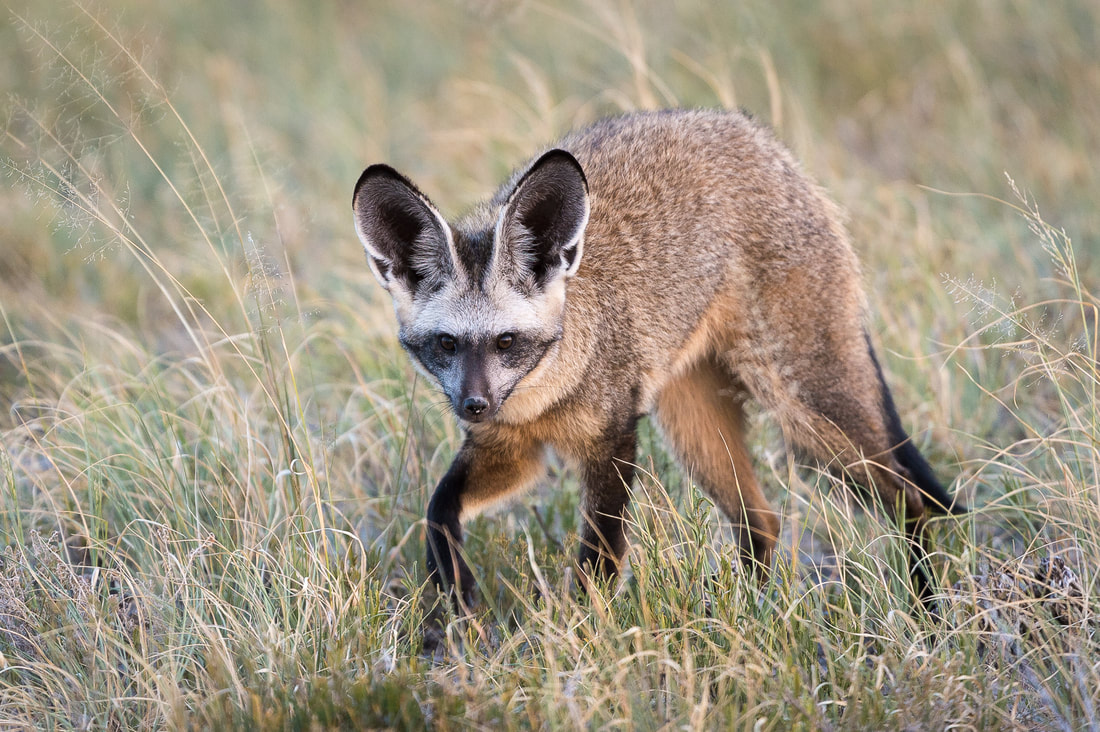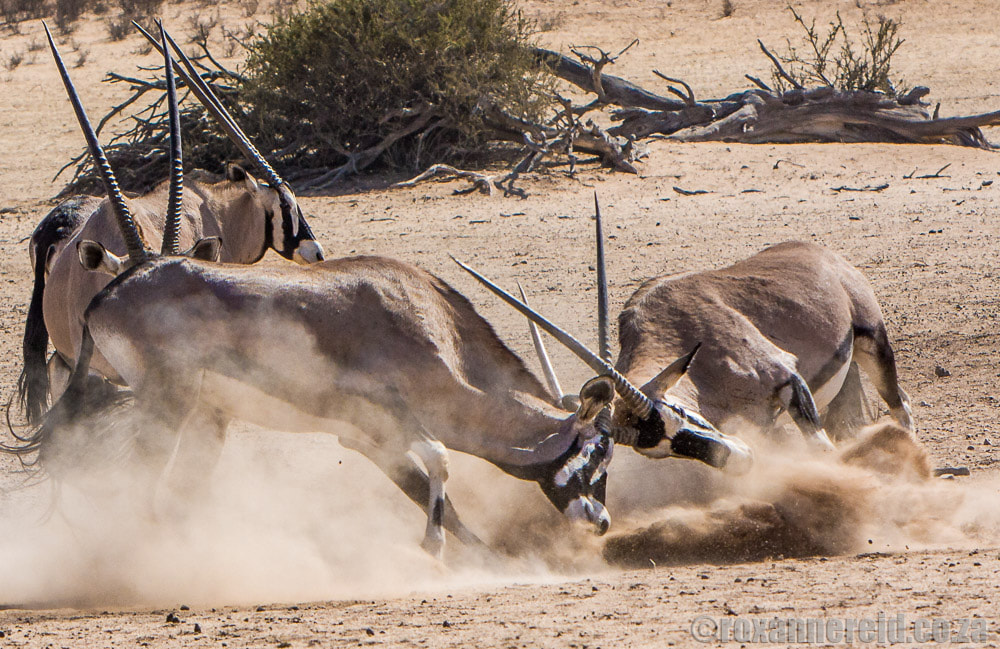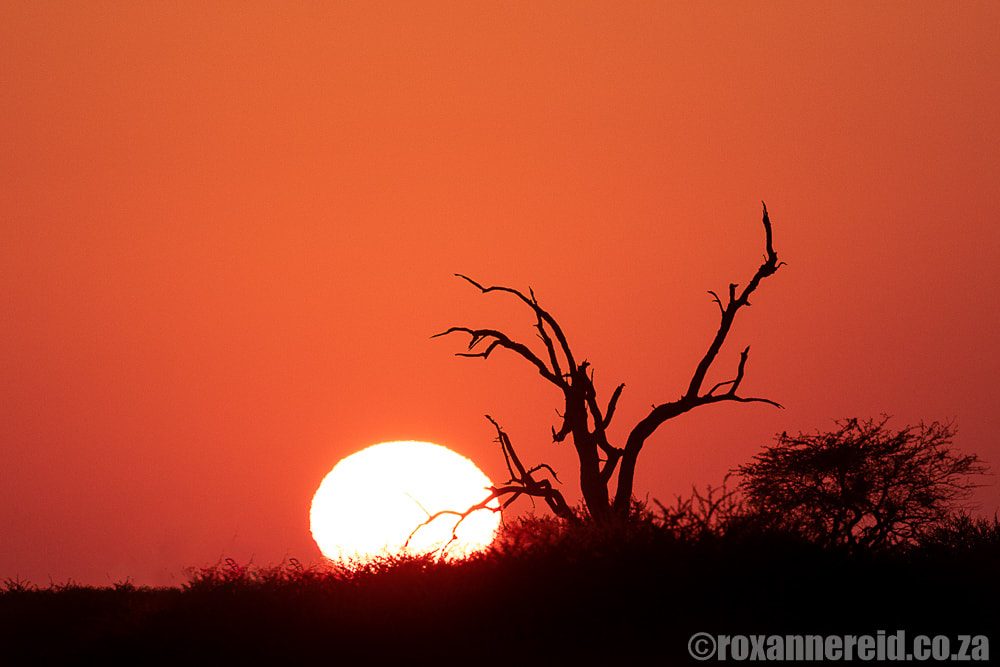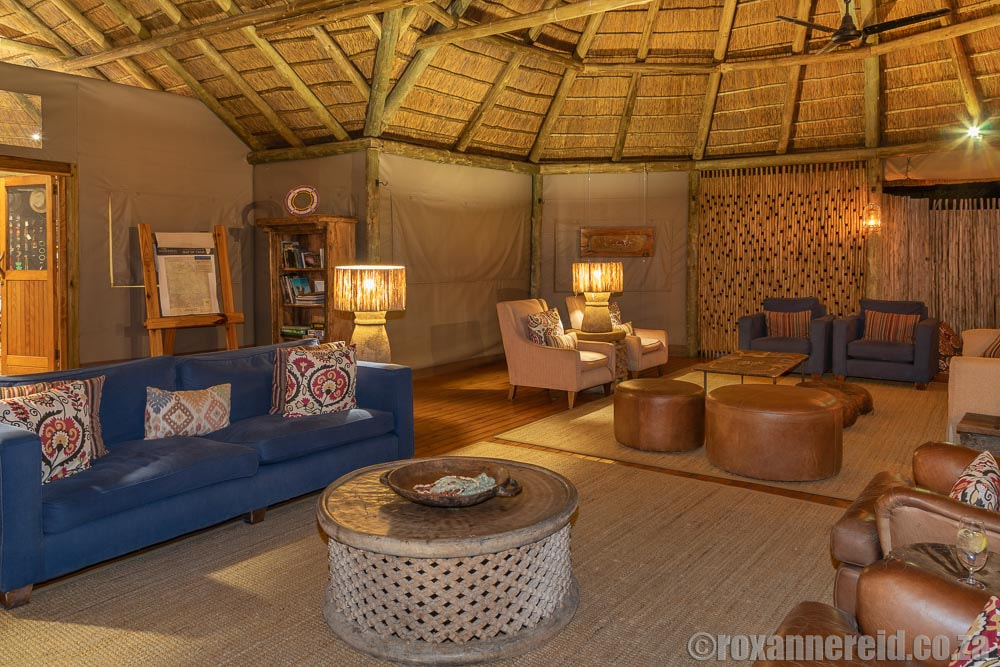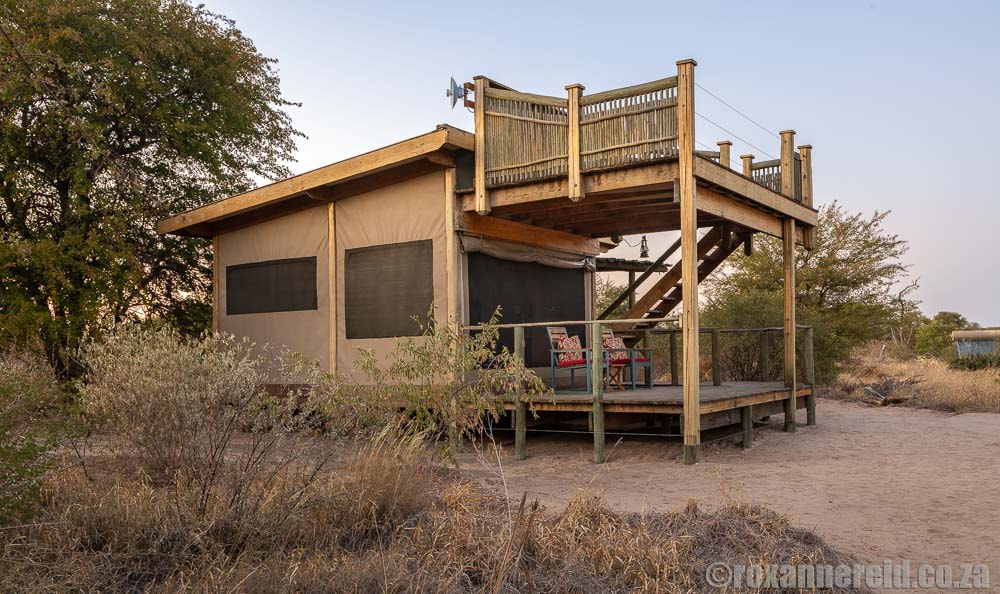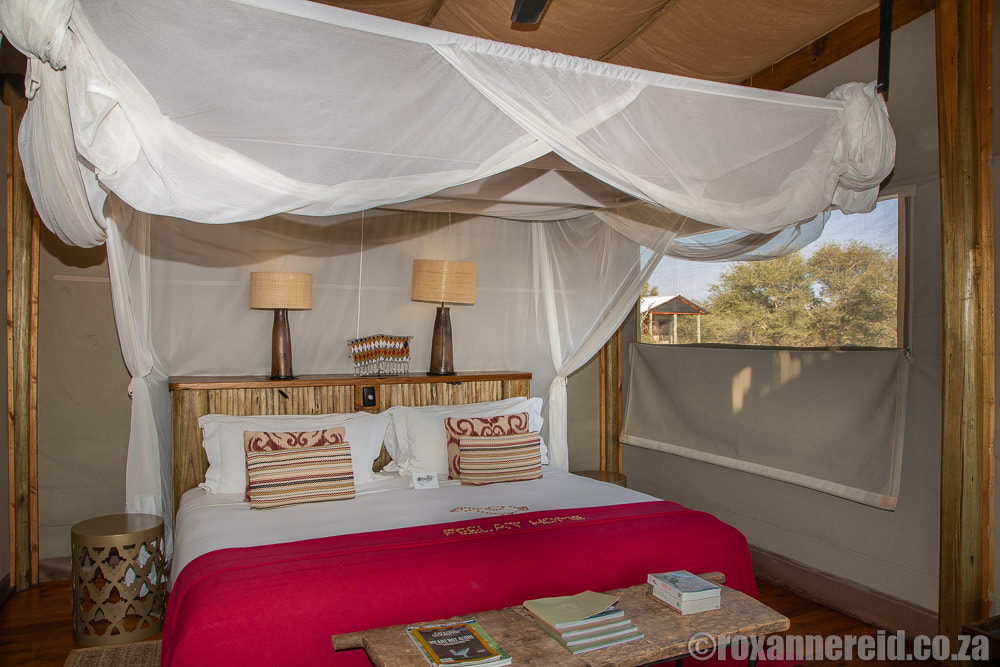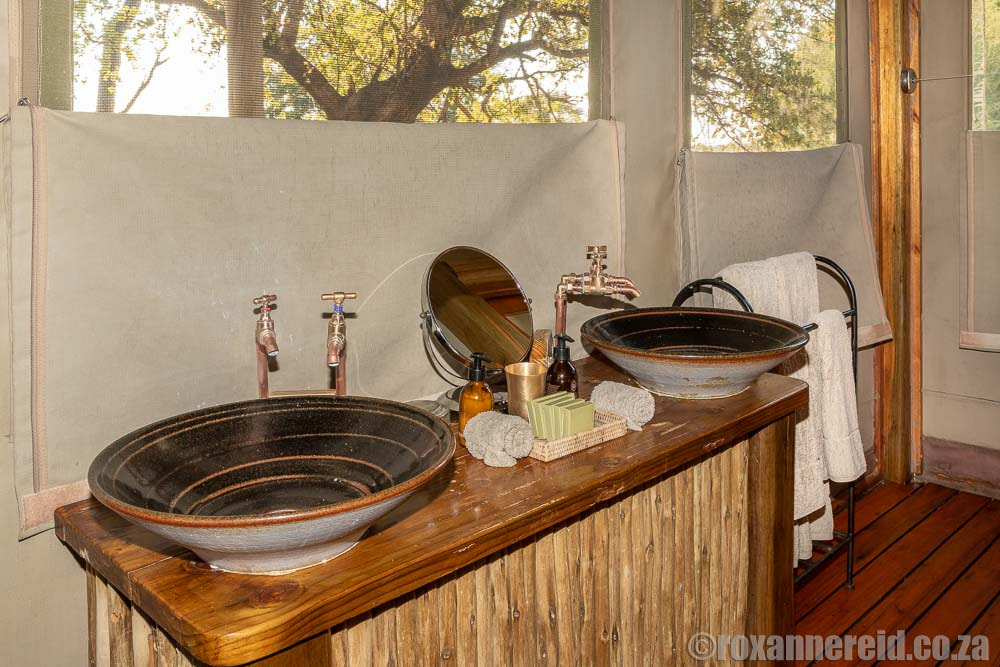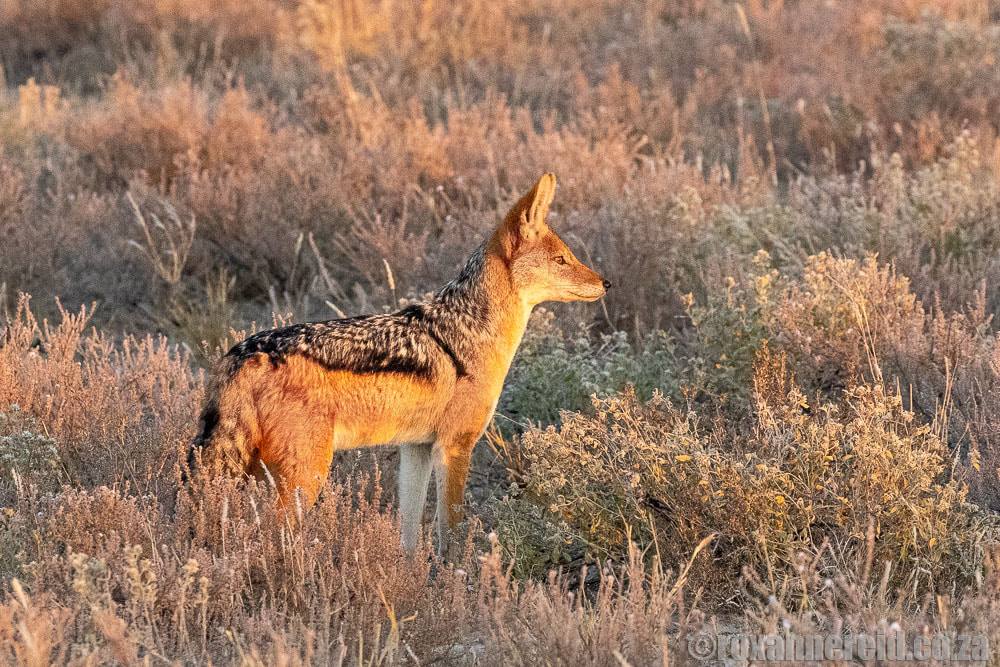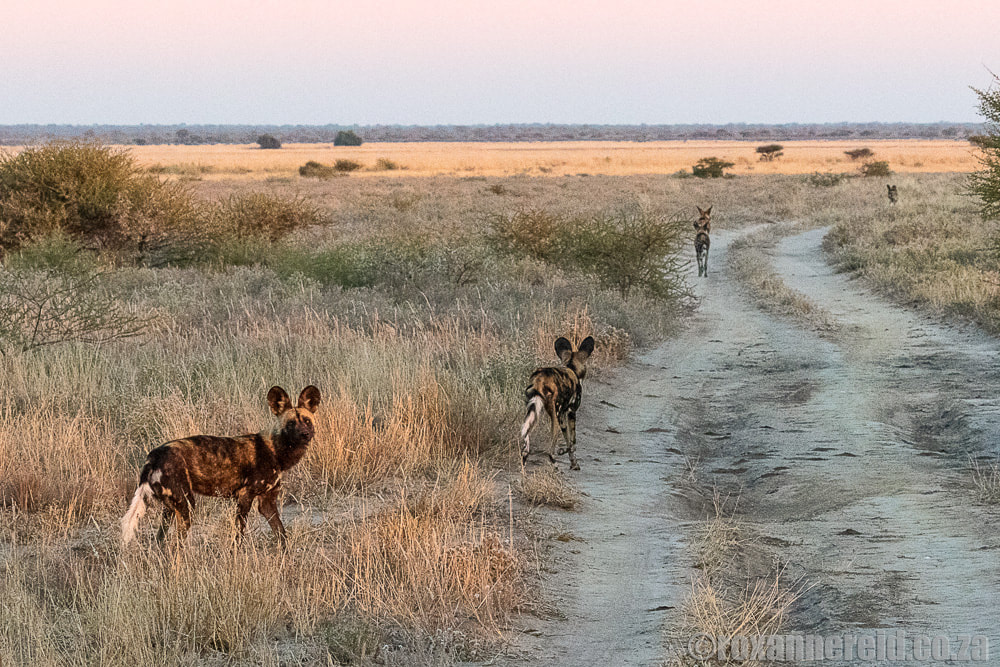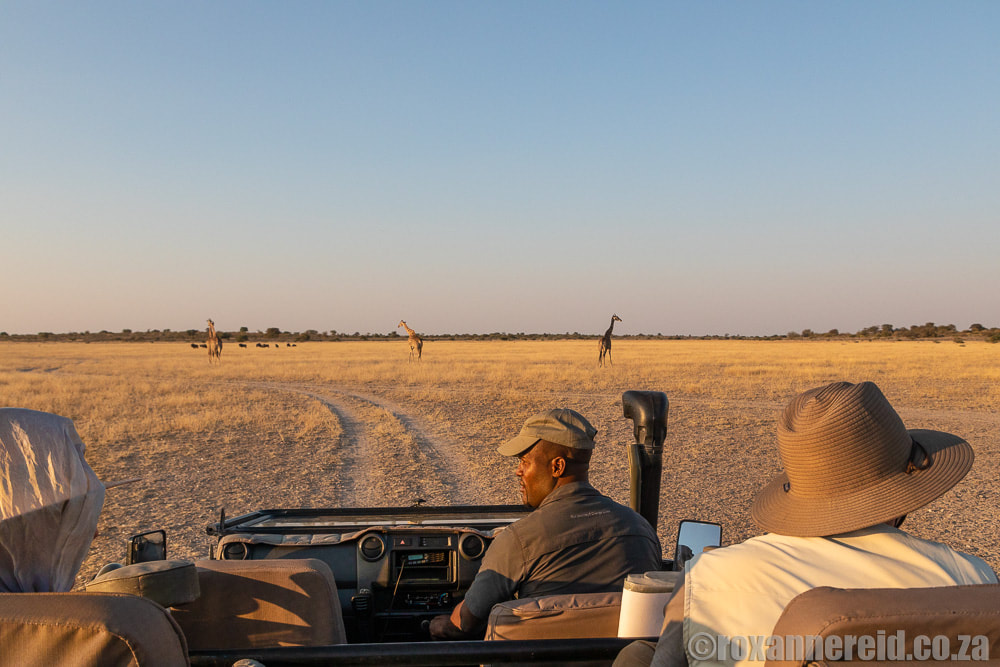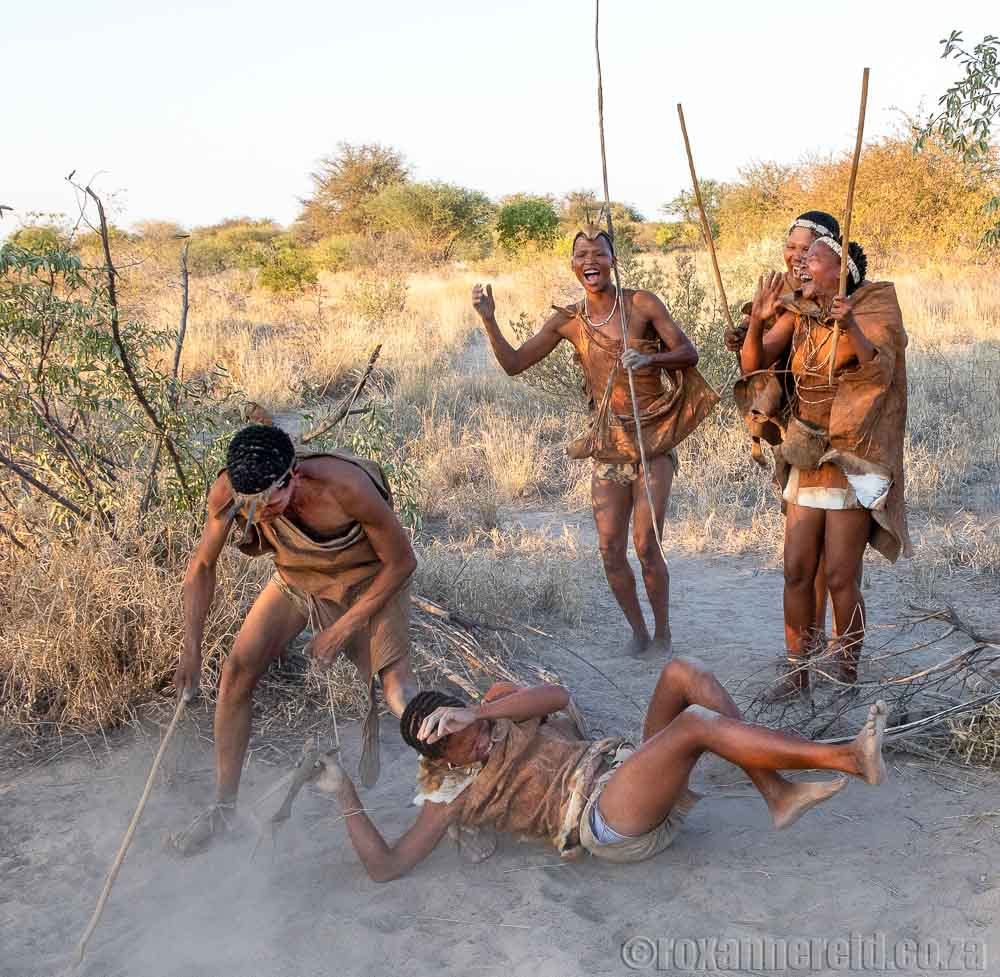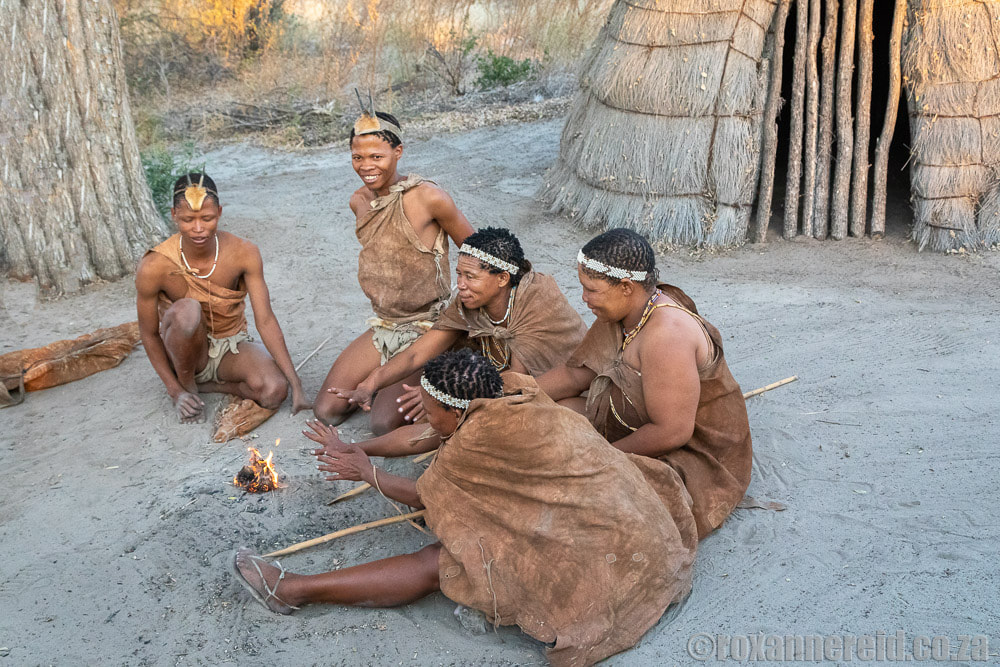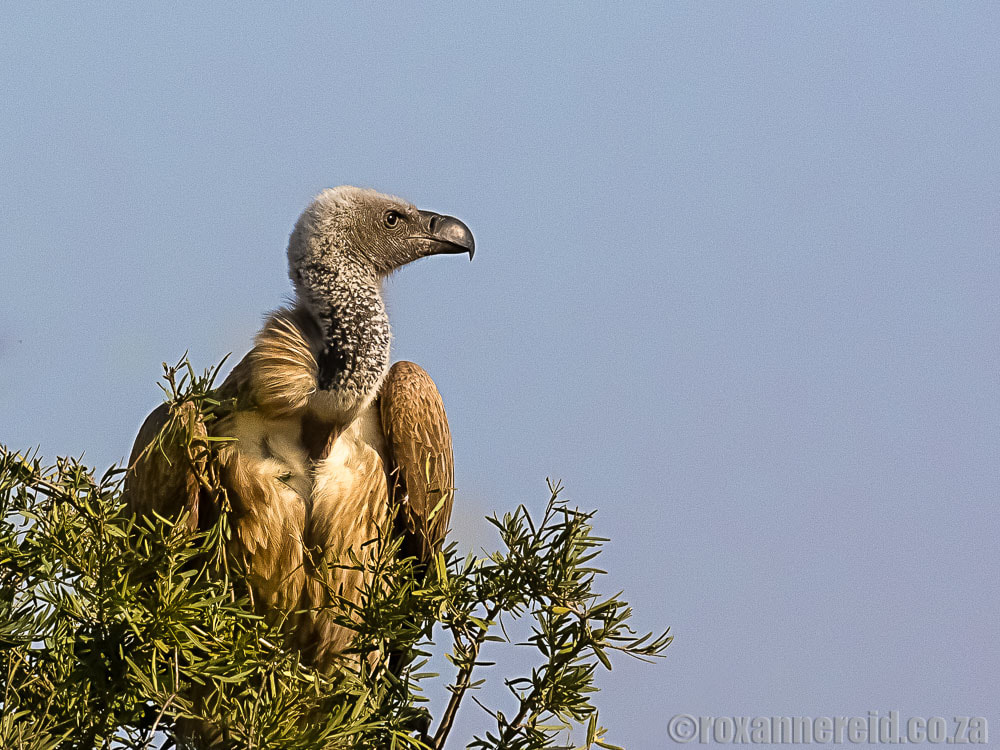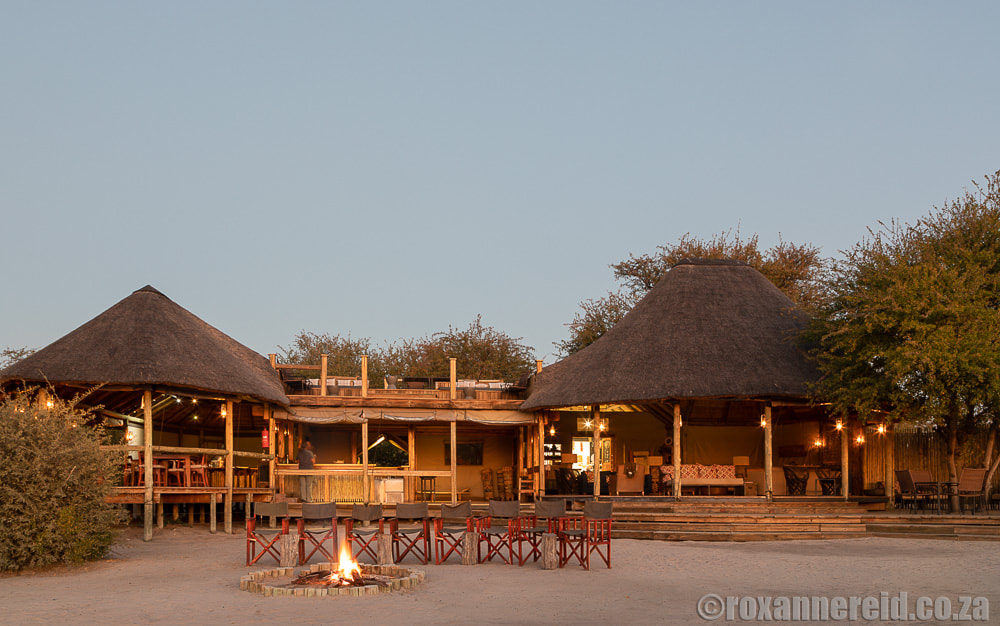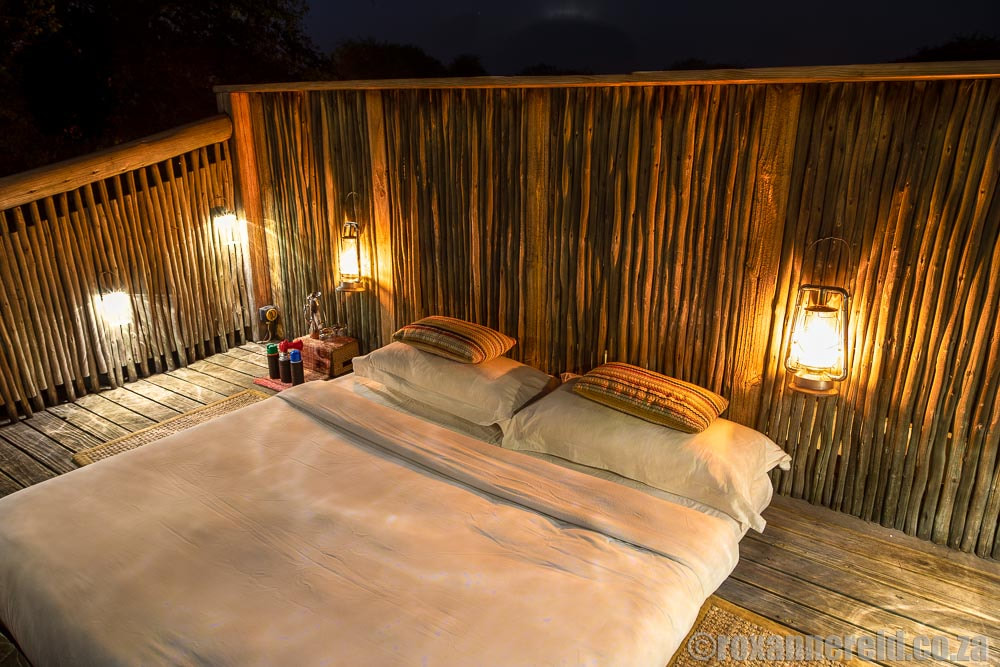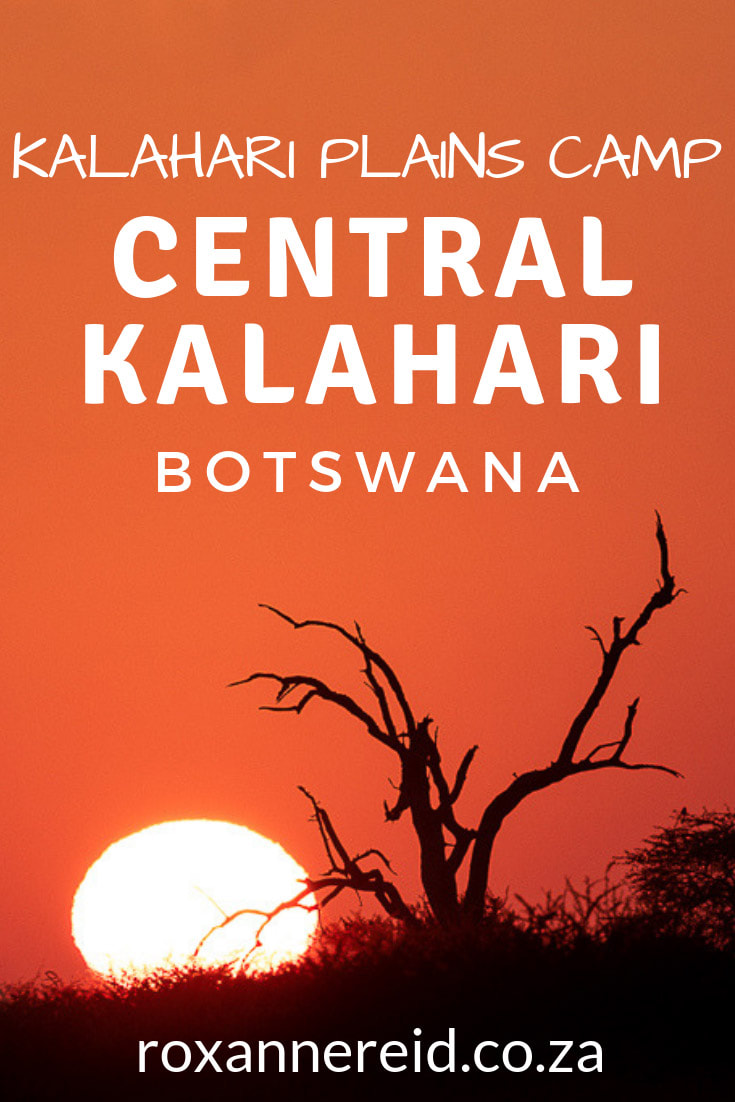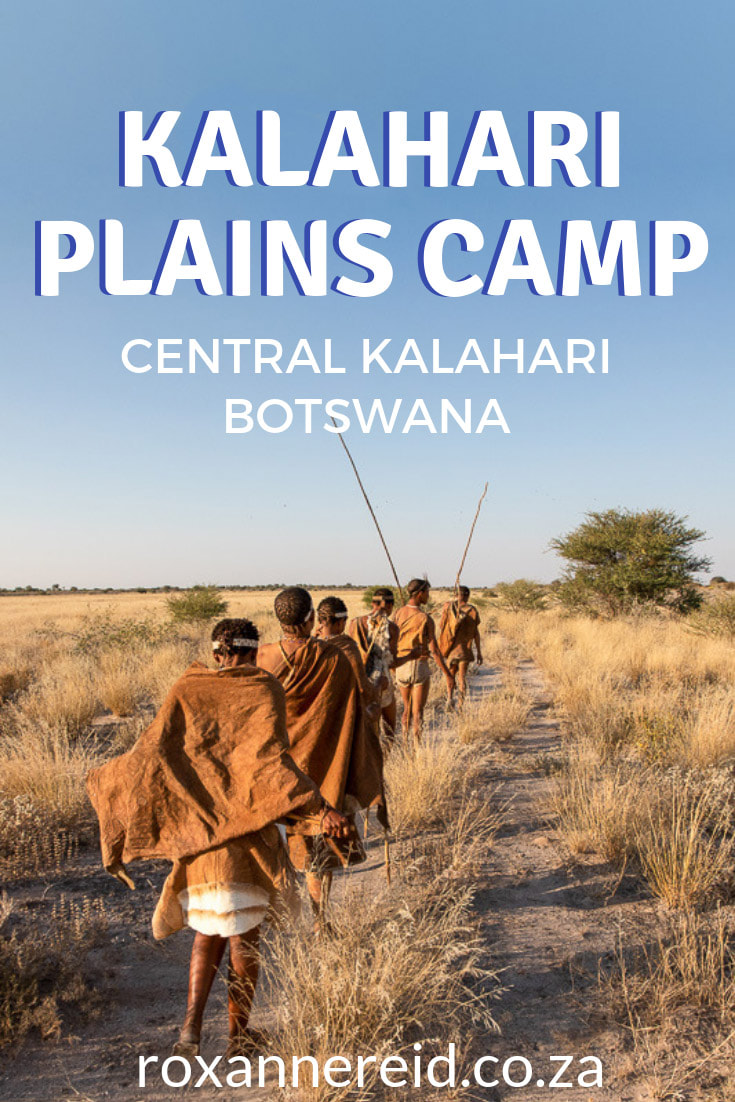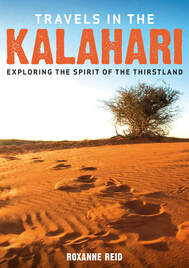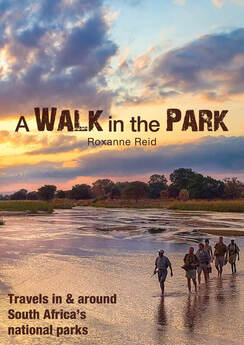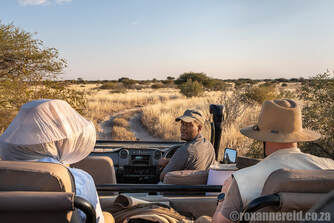
There’s something remarkable about the Kalahari, a wilderness magic that saturates its open spaces, scents the air, fluffs up the clouds and is carried on the wind. A place so timeless you can pass almost unnoticed. When we got the chance to visit Kalahari Plains Camp in the Central Kalahari Game Reserve in Botswana, we hurried to pack our safari bags.
Here in the Central Kalahari Game Reserve you’ll find open grassy plains, seasonal pans that dry up in winter, islands of acacia trees, and sand dunes covered with scrub. Yes, you’ll see lions and leopards and wild dogs here, but there are some arid area specialists that set the Kalahari apart. Think oryx (gemsbok), springbok, brown hyena and bat-eared fox, think ostrich, ground squirrel and the busy little meerkat climbing to the top of a wobbly shrub to get a better view. There’s a high concentration of cheetahs too.
And of course it’s the bigger, brasher enchantment of unruly wildebeest clowning around for no reason and kicking up dust, the striking black and white markings of an oryx, black-maned lions roaring, and cheetahs flying across the veld barely touching the earth as they chase down a steenbok or springbok.
Kalahari Plains Camp
Wilderness Safaris’ Kalahari Plains Camp looks out over Big Pan, an open valley where you can watch wildlife from far away as it comes to drink at the waterhole, see all the way to a flat horizon that reveals sunsets in coloratura radiance.
Despite the cold, we enjoyed waking earlier than we had to before joining our first game drive of the day. This allowed us to experience the sunrise, watch shadows melt away, and hear birds begin their chorus, from turtle doves and red-eyed bulbuls to red-faced mousebirds and black-faced waxbills that came to drink at the bird bath in front of the lounge.
Things to do at Kalahari Plains Camp
1. Afternoon drive in the camp’s private area
Don’t miss an afternoon drive on Wilderness Safaris’ private patch of the vast Central Kalahari Game Reserve; this is what a Botswana safari is all about.
It was pure Kalahari, with silky Bushman grass sparkling in the late afternoon sunlight, Kalahari scrub-robins bobbing around the bushes and kori bustards tramping across the veld in search of food. Four giraffe bent to drink at the waterhole, barking geckoes called as the day cooled and bat-eared foxes foraged in the grass, digging for tasty morsels. Patches of springbok, oryx and a few busy-body jackals completed the picture.
When we returned to camp we discovered that those who had stayed behind had seen two feisty honey badgers come down to the camp’s waterhole.
2. Morning drive to Deception Valley
Next morning we set out at dawn, but not before Paul showed us tracks at the bird bath about 10 metres from the lodge’s deck. A leopard had come to drink during the night. During the day, white-backed and lappet-faced vultures use the larger waterhole for bathing and preening and Mr Leopard is fussy, preferring the cleaner water of the small bird bath.
It was about 5 degrees Celsius, so we layered up with buffs and beanies and jackets and gloves, yet my eyes wouldn’t stop watering. None of that mattered when we found seven wild dogs loping across the veld toward the track in front of us at first light, one of them a pregnant alpha female. They jumped and yipped and grinned at each other. An eighth dog came straggling in from far away, head down in submission.
The dogs zig-zagged into the thick bush and we briefly lost them, but Paul branched off onto another track and picked them up further along. Twice more the same thing happened before they disappeared entirely. It was frustrating that we couldn’t go off road to follow them for longer, to see what they got up to. But here in a national reserve that’s not allowed.
The journey was a chance to notice how the landscape changes from open grassveld to thicket with Kalahari apple-leaf trees and then to open pans and undulating dunes where the dominant vegetation is umbrella thorns and black thorns. Paul kept us entertained with sightings of ground squirrels, ground agamas, oryx and springbok. ‘See that springbok, he’s the dominant ram in this area,’ he said. ‘We know that because he’s peeing and defecating on the same spot. Non-dominant rams will do that in two different places.’
And then there were elephant tracks on the road, with the added enticement of fresh elephant dung. Guided by Paul, we could see the marks of its trunk on the road as it sniffed to check for water in this dry area in a year of drought. They’re good at that, elephants. If they detect the heady smell of water under the surface, they dig with their feet, trunks and tusks, helping both themselves and other animals to access water. But there was nothing here and the elephant had moved on.
Brown hyena tracks, lion scat, wild dog scat, cheetah tracks, more leopard spoor – they all kept our spirits up. These animals were here. We just had to find them.
But we’d had an exceptional early morning sighting of wild dogs – a first for us in a Kalahari environment – so we returned to camp thrilled about that. We’d also experienced a little more of the Kalahari magic.
3. Walk with the !Xhukwe Bushmen
Don’t miss the opportunity for a cultural interaction with the !Xhukwe Bushmen. (Although the politically correct term is San, I asked them which they preferred and they favour Bushmen, so I’m being polite rather than insensitive in using that term here.)
4. Watch the waterhole in front of camp
5. Cool off in the pool
6. Go bird-watching
Enhance your game driving experience by seeing how many bird species you can spot. Or walk around the camp in search of them, especially at the bird bath in front of the lounge.
The Kalahari is home to more than 200 species, many of them arid area specials. Some of my favourites are sandgrouse, kori bustard, black korhaan (also called the helicopter bird because of the way it comes in to land) and the red crested korhaan. Guides sometimes call this the suicide bird for the male’s habit of flying vertically upward to about 30m, then drawing in its wings and dive-bombing to earth. It pulls up just short of the ground and flutters a short distance to land.
And just in case you think all Kalahari birds are dull-coloured, look out for the spectacular crimson-breasted shrike, violet-eared waxbill, lilac-breasted roller and swallow-tailed bee-eater.
7. Swap stories around the fire before dinner
8. Enjoy the food
You won’t go hungry at Kalahari Plains Camp, with breakfast, lunch, high-tea, snacks with sundowners and then dinner all well catered for. The chefs do a superb job. There was fresh fruit at breakfast – a joy here in the arid Kalahari. Delicious dishes like creamy mushroom risotto, roast lamb, and pear-and-almond tart were some of the dinner options during our visit.
9. Sleep under the stars
Sleeping out is also a chance to feel the heartbeat of the Kalahari, to listen for southern white-faced scops-owls, the cry of jackals or the roar of lions. (Read Sounds of the Kalahari for other special things to listen for.) Wake early so as not to miss a moment of the changing pink and lavender light along the horizon at dawn.
10. Go on a behind-the-scenes sustainability tour
Ask to go on a tour behind the scenes to learn about the camp’s sustainability efforts. It runs on solar energy, so the Kalahari environment itself is the source of the energy in camp. All battery storage and most of the solar panels are hidden away out of sight of the guests.
In this arid environment so different to Okavango and Chobe with their natural water channels and rivers, it’s more important than ever to conserve water. The flat roofs of the rooms help to collect rainwater during the rainy season. Average annual rainfall in the Central Kalahari is just 115mm a year, but the camp’s storage tanks hold up to 150 000 litres.
Kalahari Plains Camp also has a borehole, but the water is so salty it’s only used for showering and for the pool. A reverse osmosis desalination unit produces safe drinking water for the camp.
Like it? Pin this image!
The Kalahari in bloom
20 reasons why you shouldn’t visit the Kalahari
Copyright © Roxanne Reid - No words or photographs on this site may be used without permission from roxannereid.co.za
